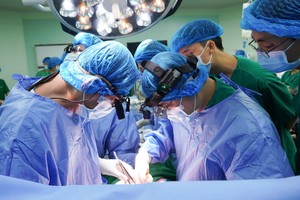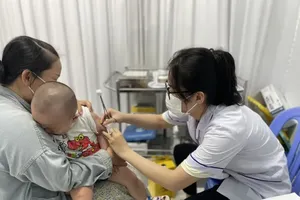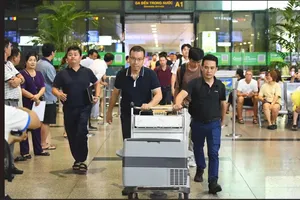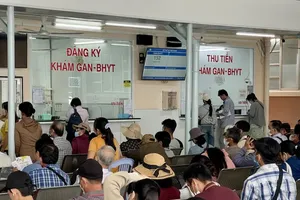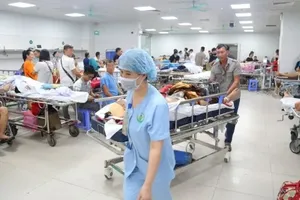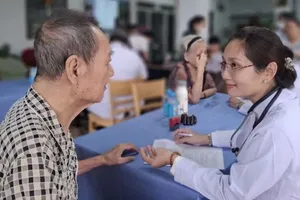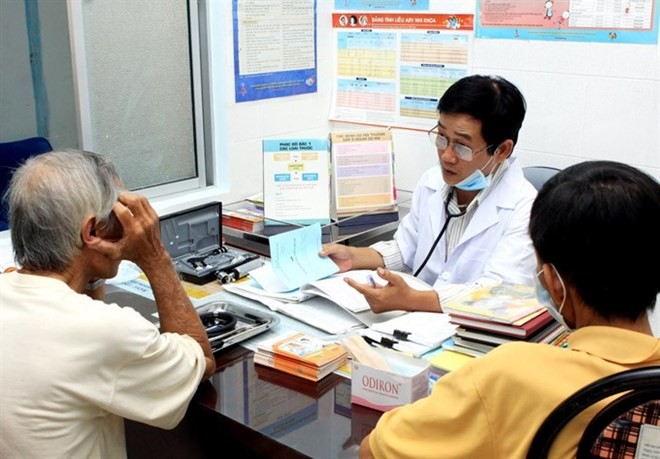
The first HIV/AIDS patient in Khanh Hoa province, where Nha Trang is located, was discovered in 1993, three years after Vietnam detected its first HIV/AIDS patient.
Khanh Hoa used to rank in the top 10 provinces for number of HIV-infected people. In the 2002-03 period, it ranked as high as the second most-infected, following HCM City. But since 2012, it hasn’t made the list, said Dr Tran Van Tin, Director of the province’s HIV/AIDS Prevention Centre.
Doctors believe that in recent years, the number of both new HIV infections and deaths has declined. Furthermore, the number of HIV-infected people being treated has increased so that 76 percent of all people with HIV are being treated at provincial health centres and hospitals.
But the prevention work faces many challenges, especially lack of human resources for HIV/AIDS prevention. There aren’t enough health staff, doctors and social workers, according to Dr Tran Van Tin.
Only two doctors at the provincial HIV/AIDS Prevention Centre are now in charge of treating 350 people with HIV by methadone, and another 100 others with antiretroviral (ARV) drugs.
In terms of funding for HIV/AIDS prevention work, Dr Tin said that in the past, the province had received about 11 billion VND from various foreign and domestic organisations ever year. But recently, only 2.4 billion VND from the provincial budget has been spent on health sector every year. And since 2016, there has been no funding for human resources training and development.
The HIV prevention work was extremely difficult, and the pressure to make progress was great, the director said. The lack of adequately trained doctors, nurses and other health professionals required everyone to stretch themselves thin on the job.
“I am in charge of both managing and directly treating patients, even preparing medical file and editing text,” said Tin.
In Khanh Hoa – a province thriving in all aspects and operating with a market economy, many doctors were happy to leave the district-level health centres when they found other jobs with higher incomes. This made it difficult for the HIV/AIDS centres to retain employees. The brain drain is a common situation not only in the province, but also in localities across the country.
At the centre, if one or two doctors took a day off, hundreds of prescriptions and patient files piled up and awaited their return.
In the past five years, Tin said, he has sent requests many times to the provincial Department of Health to recruit more doctors and health staff. While every year, hundreds of doctors submitted applications to Khanh Hoa’s hospitals, no doctor has been sent to the centre.
“There has been great pressure for many years, the Department of Health has called, but still not recruited doctors for the HIV centre,” he said. “Because no one wants to do this dangerous job.”
Lam Quang Chung, Deputy Director of the Khanh Hoa provincial Department of Health, said it knew the situation of the doctor shortage in HIV centre.
Not only the HIV/AIDS Prevention Centre, but also departments of dermatology, tuberculosis, forensics, and psychiatry have been dealing with doctor shortages, Chung said.
He stressed that after the implementation of the Government’s policy on attracting human resources to rural areas, the provincial health sector was building a proposal for a long-term health worker development strategy.


